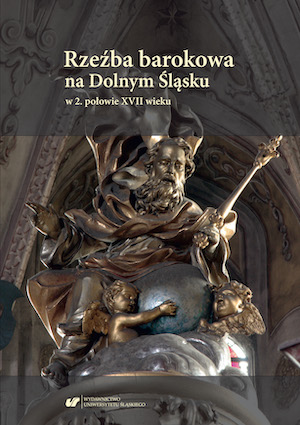Marmury dolnośląskie. Zarys dziejów wydobycia i artystycznego wykorzystania w kamieniarstwie i rzeźbie w epoce nowożytnej na Śląsku i w Rzeczypospolitej
Lower Silesian marble. A history of quarrying and artistic use in stonework and sculpture of the modern era in Silesia and Poland
Author(s): Michał Wardzyński
Subject(s): Fine Arts / Performing Arts, Visual Arts, History of Art
Published by: Wydawnictwo Uniwersytetu Śląskiego
Summary/Abstract: The most important deposits of hard metamorphic rock from Upper Proterozoic (1 billion–635 million years ago) – whiteish and greyish veined marble with various degrees of graphite (less often biotite) – can be found in Lower Silesia near Konradów Wielki (Gross Kuntzendorf) and Supíkovice (Saubsdorf) in the Jesenik District as well as Przeworno (Prieborn) near Strzelin. From the early 13th century these villages belonged to the Bishops of Wrocław’s Duchy of Grodków and Nysa. The marble began to be quarried and used for artistic purposes as early as the turn of the 14th century, but the height of its popularity came only in the second half of the 16th, 17th and 18th centuries, when it became, alongside the local varieties of sandstone, the basic material used in sculpture and stonework in Nysa and from the last quarter of the 17th century – in Wrocław and, more broadly, Lower Silesia. After 1700 it was also exported to the neighbouring Polish-Lithuanian Commonwealth, e.g. its central province of Wielkopolska with the city of Poznań, and the Upper Silesia-Małopolska borderland with Jasna Góra near Częstochowa. Around 600 woks made of the marble in question have survived to this day.
The whiteish-grey combination of marble, strikingly similar to the tandem of such rocks from Carrara (varieties of marmo bianco di Carrara and Bardiglio in figural, ornamental and architectural elements respectively) used in Tuscany, and in the Spanish Netherlands and Holland (Noir Belge and Noir de Dinant limestone with Carrara marble, alabaster or Cretaceous limestone from Avesnes-le-Sec according to an identical pattern) became a characteristic of the oeuvres of the most important masters of mature and late Silesian Baroque and Rococo styles: Sulpicius Gode, Johann Adam Karinger, Johann Albrecht Siegwitz and Franz Joseph Mangoldt. Direct models to be followed were provided in Wrocław by imported decorations of the cathedral Chapel of St. Elisabeth and the Electoral Chapel, in which the main material for figural sculptures was marble from Carrara (Domenico Guidi and Ercole Ferrata, from 1700) and Laas / Lasa in Tirol (Ferdinand Maximilian Brokoff, 1721–1722). In the most prestigious figural works the medium grained rock from Kondradów and Supíkovice was replaced with Thuringian alabaster or stucco, or even white painted limewood, which made it possible to achieve more intricate effects in sculptures. This unique regional material tradition continued beyond 1800.
Book: Rzeźba barokowa na Dolnym Śląsku w 2. połowie XVII wieku
- Page Range: 109-138
- Page Count: 31
- Publication Year: 2020
- Language: Polish
- Content File-PDF

